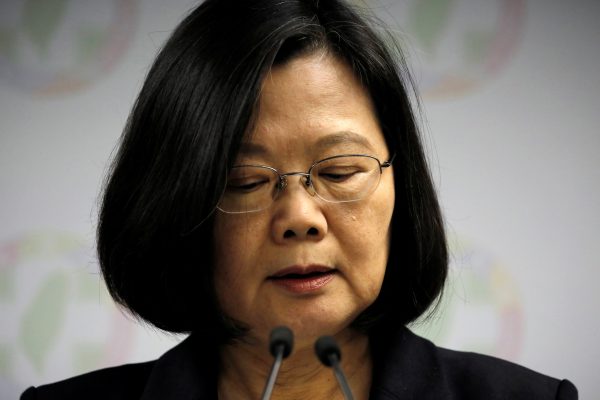The results of the 2018 local elections reflect growing public dissatisfaction with the DPP administration’s performance over the past two years. They foretell a challenging future for Taiwanese President Tsai Ing-wen, whose approval rating has remained low at around 30 per cent for years, as she readies for her 2020 re-election campaign.
There are three major reasons that explain the DPP’s local election debacle.
First, although Tsai Ing-wen claims that she has made significant reforms — to labour laws, to the implementation of transitional justice and to pension systems for civil servants, teachers and military personnel — voters are yet to recognise these reforms as a success. Those affected by the pension cuts have become one of the strongest protest groups against the Tsai administration.
Second, the KMT’s Kaohsiung mayoral candidate Han Kuo-yu, ran a very successful campaign. Kaohsiung is a port city in southern Taiwan that has been ruled by the DPP for more than two decades. In this election, Han not only turned Kaohsiung from a green (DPP) to a blue (KMT) column, but also exerted a strong coattail effect on other races. His nationwide popularity, the so-called ‘Han tide’, mobilised KMT supporters while his ‘economy first’ platform persuaded non-partisan voters to vote for the KMT.
Relatedly, while the KMT focussed on economic growth and livelihood issues such as energy security and pollution to attract non-partisan voters, the DPP appealed to voters to preserve democratic values and fight against a possible ‘China threat’. The KMT tended to attract ‘practical’ or economic voters while the DPP launched a value-based, ideological campaign to consolidate its base. The final verdict was that the majority of voters sought a strong economy and quality of life.
President Tsai needs to bounce back quickly in 2019. Otherwise, her prospects for re-election will be soured. The major challenges of the Tsai administration moving forward are twofold: how to respond to the need for economic growth and how to deal with a divergence of interests between central and local governments.
The two issues are connected. Shortly after the 2018 elections, the newly elected KMT local chiefs began to emphasise the importance of the 1992 Consensus that paved the way for the creation of city-to-city channels with mainland China to boost local economies. As the Tsai administration refuses to accept the 1992 Consensus, central and local governments are likely to take different approaches towards cross-Strait relations.
The 1992 Consensus is a product of and closely associated with KMT rule. After former KMT chairman Lien Chen met with Chinese president Hu Jintao in 2005, the Chinese government increased the number of categories of fruit permitted to be imported from Taiwan with zero tariff treatment under the premises of the 1992 Constitution. And during KMT president Ma Ying-jeou’s era between 2008 and 2016, cross-Strait economic exchanges were facilitated by the import of various Taiwanese products to mainland China.
The election of the DPP and President Tsai in 2016 changed the dynamics of cross-Strait relations. The DPP administration kicked off its New South Bound Policy and put more emphasis on its relations with the United States and Japan to balance against the pro-China policy of the preceding Ma era.
Faced with a less amenable Taiwanese government, the Chinese government is offering preferential policies to attract more Taiwanese to China, for instance by granting them equal treatment alongside their Chinese ‘compatriots’. Through economic benefits and preferential policies, the Chinese government hopes to influence Taiwan’s policy on cross-Strait relations by nurturing friendly attitudes towards mainland China among the general public.
Today, it is foreseeable that the new KMT local governments will pursue enhanced city-to-city exchanges across the Strait, such as increased numbers of Chinese tourists. At the same time, the Tsai administration will continue its firm line on Beijing, including by offering incentives to Taiwanese businesses in mainland China to encourage them to return to invest in Taiwan.
More cross-Strait exchanges may help Taiwan boost its economy in the short term. But in the long run, the political and security impact of Taiwan’s economic dependence on mainland China remains a tough challenge for not only the government but also for the people of Taiwan.
The Taiwanese economy is still heavily entwined with China, making local political and social development inevitably connected to cross-Strait relations. And the results of November’s local elections have only made the intermingling of politics and economics ever more complex for the ruling DPP government.
Jean Yu-Chen Tseng is Assistant Professor in the Department of Public Affairs, Fo-Guang University, Taiwan.
This article is part of an EAF special feature series on 2018 in review and the year ahead.

